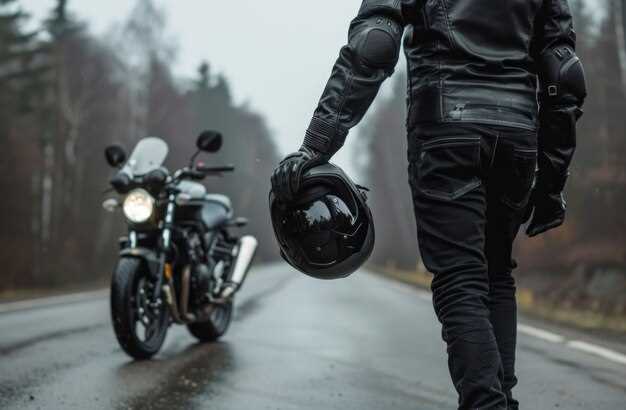
For every rider, whether on a motorcycle, bicycle, or any other two-wheeled vehicle, safety is paramount. The thrill of riding can be overshadowed by the potential risks involved, making it essential to equip oneself with proper safety gear. Among the most critical pieces of equipment is the helmet, designed to protect the most vulnerable part of the body – the head.
A quality helmet does more than just meet legal requirements; it can mean the difference between life and death in the event of an accident. Modern helmets are engineered with advanced materials and technologies that absorb impact energy, reducing the risk of severe head injuries. However, not all helmets are created equal, and choosing the right one involves more than just picking a stylish design.
Additionally, beyond the helmet, riders should consider other essential safety gear such as gloves, jackets, and protective pants. Each piece plays a crucial role in minimizing injury and enhancing comfort during rides. Understanding the importance of each element in a rider’s safety gear is vital for fostering safer riding habits and ensuring a fulfilling riding experience.
Choosing the Right Helmet for Maximum Protection

Selecting the appropriate helmet is crucial for ensuring the safety of any rider. A well-fitted helmet can dramatically reduce the risk of head injuries in the event of an accident. There are several key factors to consider when making your choice.
First, ensure that the helmet meets safety standards set by recognized organizations such as DOT, ECE, or Snell. These certifications indicate that the helmet has undergone rigorous testing and offers reliable protection. Look for a sticker inside the helmet that confirms its compliance with these standards.
Next, focus on fit and comfort. A helmet that is too loose may come off during a crash, while one that is too tight can cause discomfort and distraction. When trying on a helmet, make sure it sits low on your forehead and feels snug but not painfully tight. Consider how it feels after wearing it for a few minutes, as comfort is essential for prolonged use.
Weight is another important aspect to consider. A lighter helmet can be more comfortable over long rides, reducing neck strain while still providing adequate protection. Materials used in construction can significantly impact both weight and safety, with options including polycarbonate, fiberglass, and carbon fiber.
Ventilation plays a vital role in rider comfort, especially during hot weather. A well-ventilated helmet can prevent overheating, allowing you to ride for extended periods without discomfort. Ensure that there are adjustable vents that allow you to control airflow according to your preferences.
Finally, consider additional features such as visors, noise reduction capabilities, and sun protection. A clear visor can improve visibility in various weather conditions, while noise-reducing elements can enhance the riding experience by reducing wind noise.
In conclusion, choosing the right helmet for maximum protection involves evaluating safety certifications, fit, comfort, weight, ventilation, and additional features. Taking the time to select a high-quality helmet ensures that you prioritize your safety and enhance your riding experience.
Essential Body Armor: What to Look For
When selecting body armor for riding, the primary focus should be on protection without sacrificing comfort. Look for armor that meets safety standards defined by organizations such as CE or ASTM, ensuring that it has been tested for impact resistance and durability.
The fit of the armor is crucial; it should conform closely to the body while allowing for freedom of movement. Consider adjustable features, which can enhance both comfort and effectiveness. If the armor feels bulky or restricts motion, it may not provide the necessary level of protection when needed.
Materials matter significantly as well. High-quality body armor typically uses advanced materials like Kevlar, EVA foam, or impact-absorbing polymers. These materials not only provide excellent protection against abrasions and impacts but also promote breathability and moisture-wicking, keeping you comfortable during rides.
Pay attention to the coverage area. Look for armor that protects vital areas such as the shoulders, elbows, back, and chest. Some products offer additional coverage for the hips and knees, which can be beneficial for comprehensive protection.
Additionally, consider the weight of the armor. Heavier options may provide greater protection, but often come at the cost of comfort. A balance between weight and protection is essential for a good riding experience.
Finally, assess the armor’s compatibility with your riding gear. It should integrate seamlessly into your jacket or suit, ensuring that there are no gaps in protection. Overall, investing in high-quality body armor can significantly enhance your safety while riding, providing the confidence to enjoy the journey ahead.
Footwear That Safeguards Against Injury

Choosing the right footwear is crucial for riders who seek protection and comfort while on their journeys. Specialized riding boots are designed to provide both safety and performance, making them an essential piece of gear for every rider.
One of the primary functions of riding footwear is to offer protection against impact and abrasions. These boots are typically crafted from durable materials, such as leather or synthetic composites, that can withstand harsh conditions and potential hazards. Reinforced toe caps and ankle support help to shield the feet and lower legs from injuries that may occur during accidents or falls.
In addition to impact resistance, riding boots often include slip-resistant soles that enhance grip on various surfaces. This feature is vital for maintaining stability on the bike and preventing slips in wet or uneven terrain. Furthermore, proper footwear can prevent foot fatigue during long rides, contributing to overall rider safety.
Weatherproof options are also available, providing additional protection from the elements. Waterproof boots keep feet dry during rain, while insulated models can help maintain warmth in cold conditions. This ensures that riders remain comfortable and focused on the road ahead, rather than being distracted by discomfort.
Ultimately, selecting the right footwear is a key decision that significantly impacts a rider’s safety. Investing in high-quality riding boots that prioritize protection not only minimizes injury risks but also enhances the overall riding experience.












